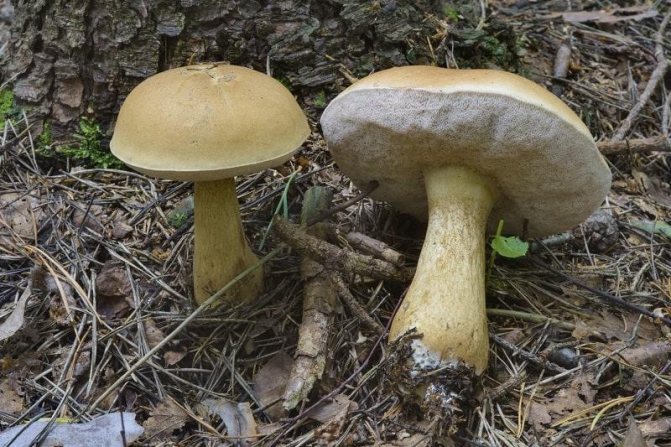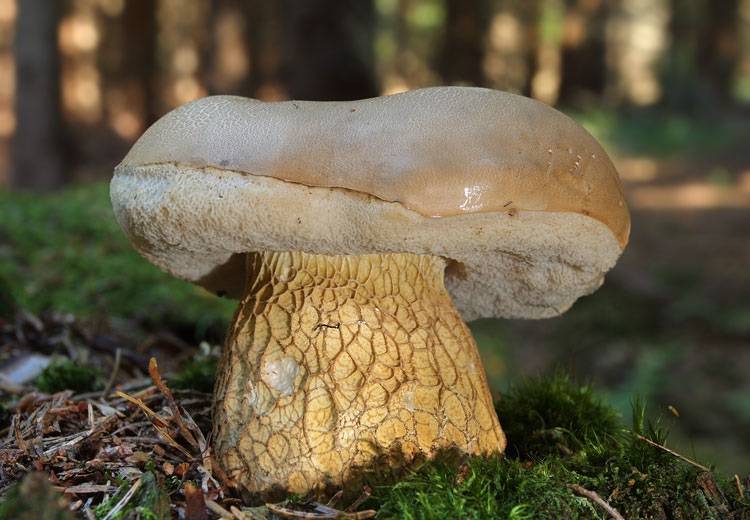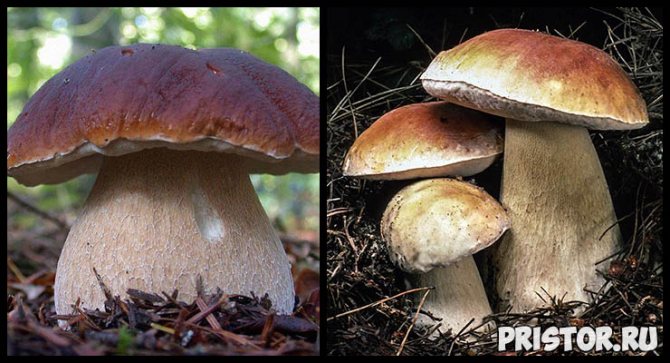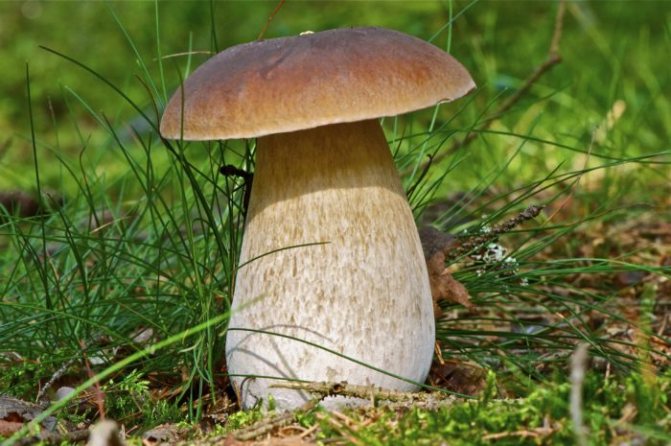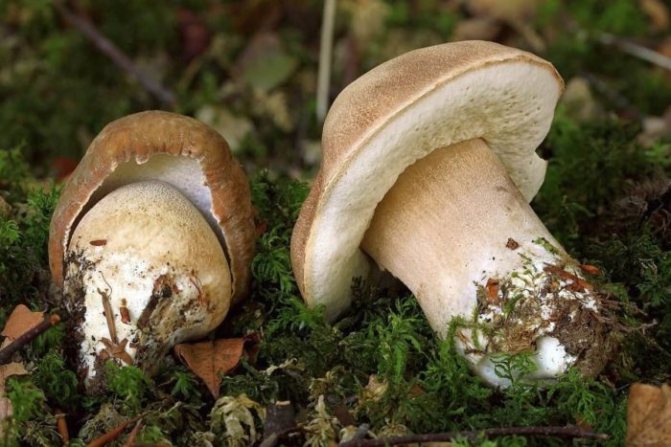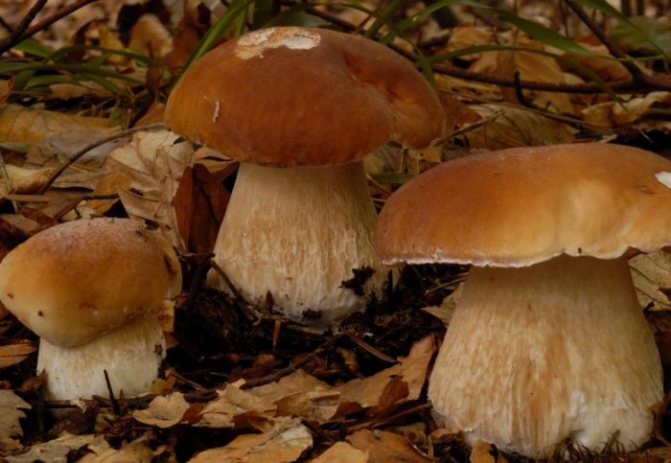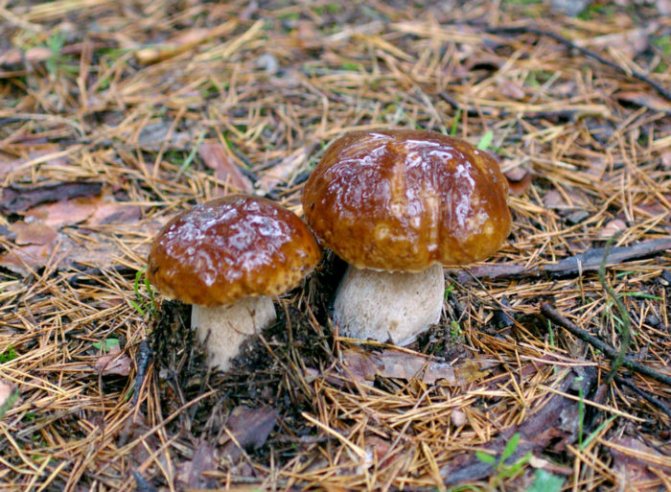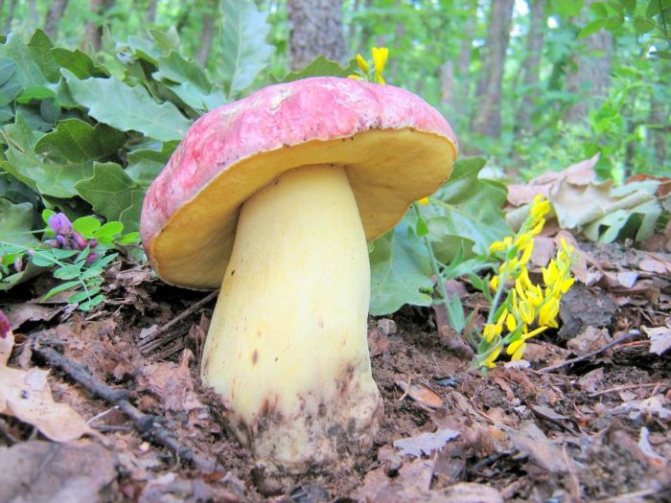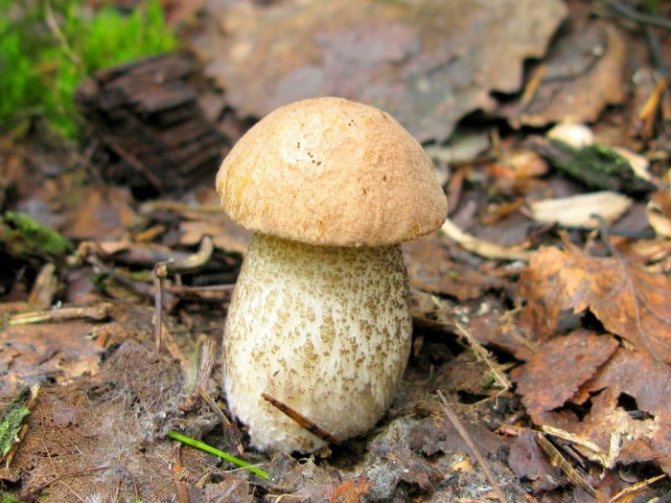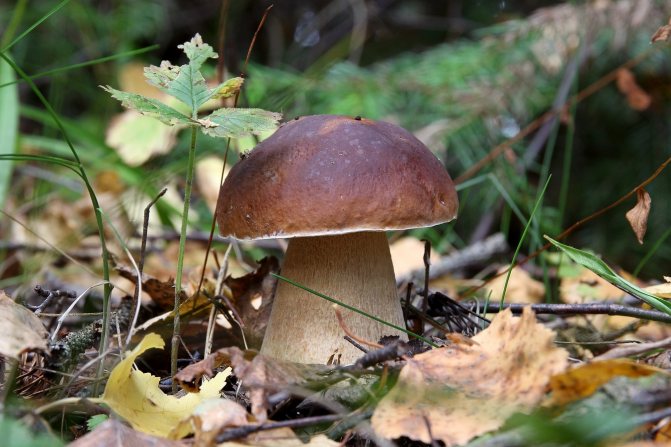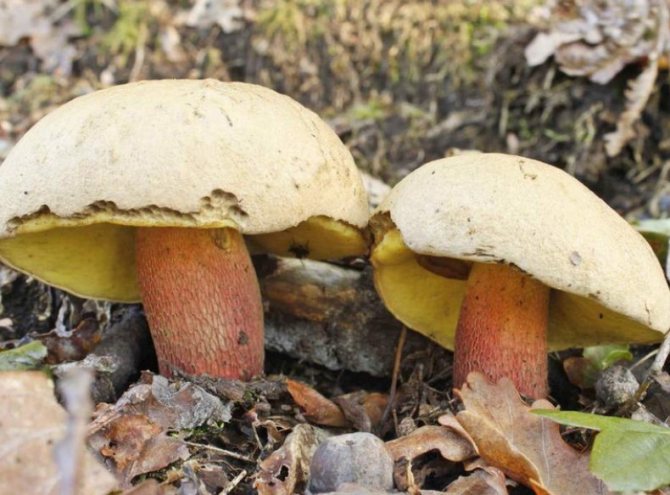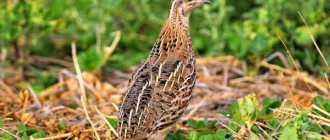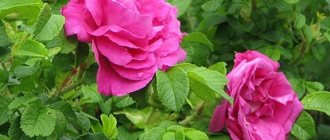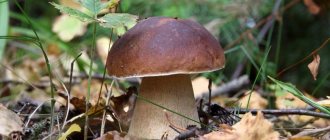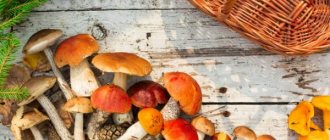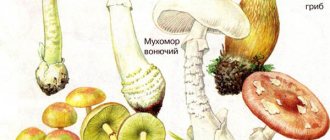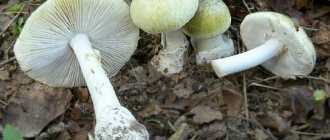3.4 / 5 ( 7 votes)
The mushroom pickers rightfully consider the boletus, one of the representatives of the Boletov family, to be the most valuable "forest delicacy". It is difficult to compare with it to other types of similar products: the fact is that this mushroom has exquisite taste, and its nutritional value lies in the fact that it is characterized by such a feature as rapid assimilation in the human body.
Despite the fact that boletus has been familiar to people for a long time, it continues to be confused with a false inedible porcini mushroom. This happens because it is difficult to distinguish it from the real one, and quite often it becomes the cause of numerous poisonings. It should be noted that the insidious counterparts of healthy delicacies are, first of all, gall and satanic mushrooms. Therefore, in order to avoid all sorts of troubles - including hospitalization in the hospital - one should learn to distinguish one from the other.
The specimens, which popularly earned the name "gorchaki", received this name because of their bitter taste. In this regard, the false boletus - gall mushroom - is not considered poisonous, but cannot be used for cooking and canning.
This species looks exactly the same as the original: it is the owner of a thick leg and a large - up to 15 cm in diameter - cap, which becomes slightly sticky under the influence of rain moisture. Please note that in young specimens, the tops differ in a slightly convex shape, and over time they acquire a flatter surface. The thick caps of these false porcini mushrooms can range in color from chocolatey yellow to deep brown. The legs, in turn, can grow up to 10 cm in length and have a shade of pale cream or pale brown. A characteristic feature is also a dark-colored mesh that runs over the top of the mushroom.
Gall mushroom (false white mushroom) - description and photos. What does a gall fungus look like?
The diameter of the cap of an inedible gall fungus varies from 4 to 15 centimeters, in young mushrooms it is hemispherical, and in mature representatives it becomes more rounded and outstretched. The color of the bitter cap has shades from brownish-yellow to light brown, more often light tones, reminiscent of the color of porcini mushrooms, prevail. The spongy substance of a young fungus is white, but becomes pinkish with age.

The pulp of the gall fungus is fibrous, almost odorless or with characteristic mushroom notes. The shape of the leg of the bile fungus is most often cylindrical, swollen at the base. The height of the leg is from 3 to 13 centimeters, the width is 2-3 centimeters. In the process of maturation, the leg of the false porcini mushroom is covered with a dense mesh of small gray or brown fibers. The pores of the inedible mushroom have a rounded, less often angular shape. The spore powder is pink or pinkish brown in color.
The most important feature is that the freshly plucked gall fungus at the fracture site immediately begins to darken, acquiring a brown color. It is also worth noting that bitters are very rarely wormy.
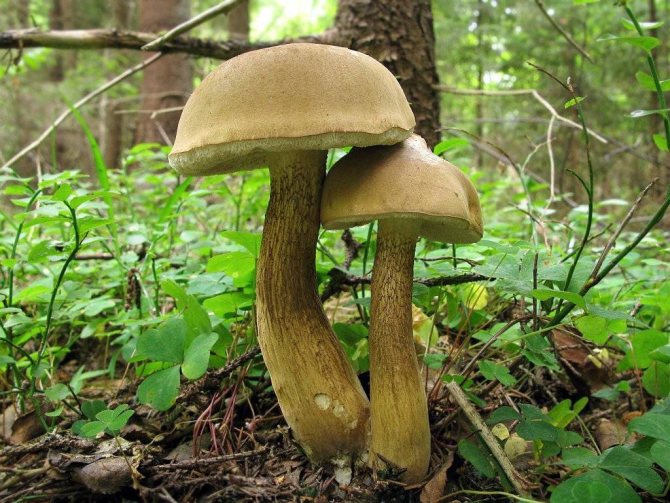

How to distinguish it from boletus
Indeed, gorchak is very similar to the beloved boletus. This is especially true of young fruiting bodies, which have practically no signs of difference.
Sectional gall and porcini mushroom:
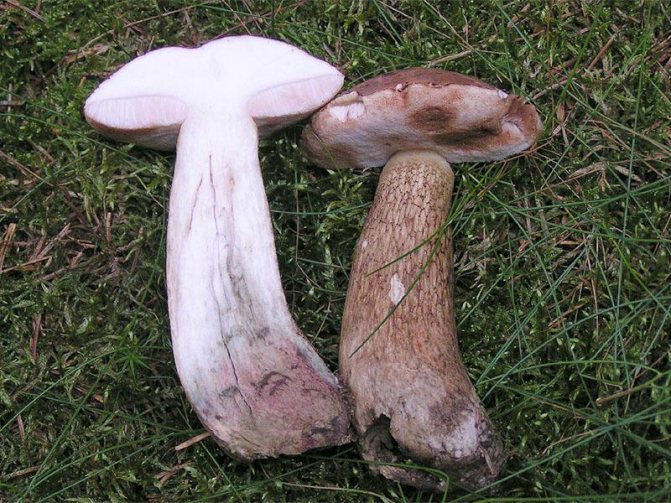

Sectional gall mushroom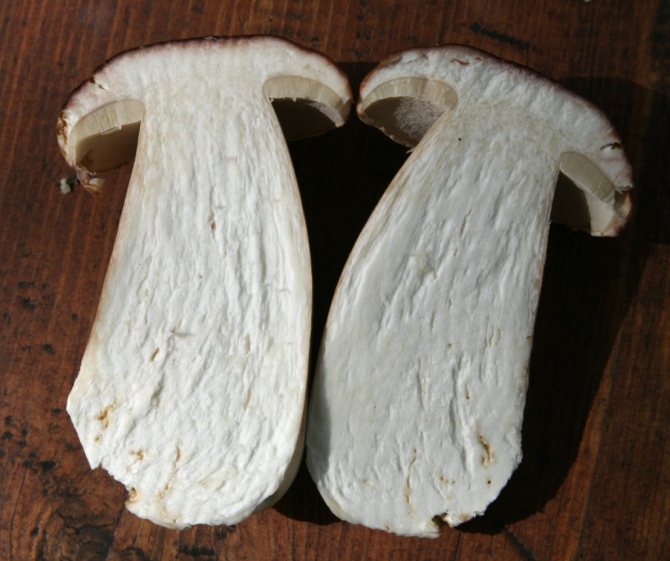

Cutaway porcini mushroom
But, there is still a difference in appearance between these mushrooms. This is what makes it possible to understand exactly whether to take the mushroom into the basket or not.
The main differences between gorchak and boletus:
- If in doubt that it may be false, cut open the fruiting body. If this is not boletus, but bitterness, then in the damaged area, after contact with oxygen, the color of the pulp should change to pink. Borovik, in turn, does not change the color of its pulp. It will remain the same white or cream.
- The double has a brown mesh on the leg, which creates a pleasant pattern. The boletus does not have it.
- The tubes are located under the cap. They will always be white or cream in boletus. If we talk about gall, then most likely the color of the tubes will be slightly pinkish or dirty pinkish.
- Boletus is appreciated not only by mushroom pickers, but also by forest dwellers. For this reason, the surface of their cap is often damaged, or there are worm tunnels in the stem of a mature boletus.
Some mushroom pickers recommend licking the flesh of the fruit body and taste it. If it’s bitter, then it’s immediately felt.
Where does the gall mushroom (false porcini mushroom) grow?
The gall fungus grows in coniferous and deciduous forests in Russia, in Europe and America. Forms mycorrhiza with birch, oak, conifers. It begins to appear in early summer and bears fruit until October. False porcini mushrooms grow mainly on rotten stumps, in tree roots, in groups of 5-15 mushrooms, sometimes singly. In medicine, the gall fungus (false white mushroom) is used to create drugs with a choleretic effect.
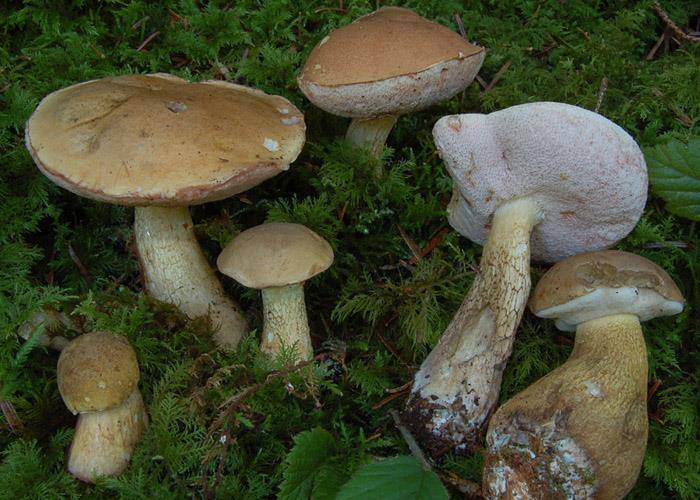

Differences of the white present
In the forests and forests of Russia, there are mainly three types of genuine porcini mushrooms. These are the so-called summer, birch and pine whites. They all differ in appearance, as well as in taste and nutritional value. Real boletus have the following differences from their counterparts.
Summer mushroom:
- The cap is convex, its diameter is up to 25-35 cm. It is always covered with dry and light brown skin.
- The stem is usually thick, fleshy and widens at the bottom. It has a brown tint and is covered with a mesh pattern.
- The pulp is quite dense, fleshy, white in color. After cutting, the color does not change.
- The taste is sweetish, but with an inherent mushroom aroma.
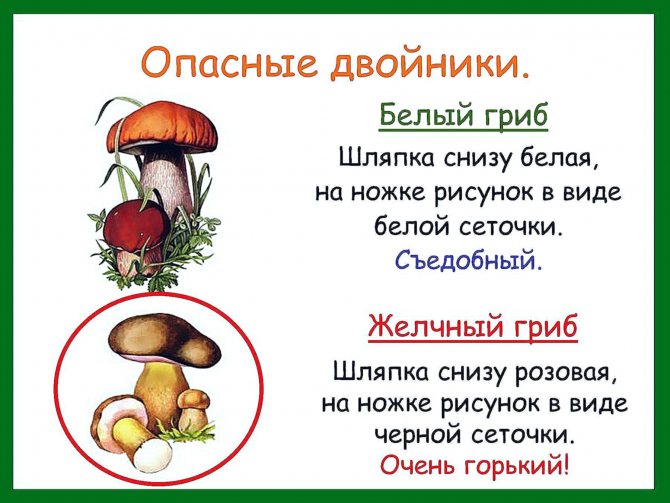

White birch:
- The hat is flat or cushion-shaped. Diameter up to 15 cm. Its surface is smooth, shiny and has a beige color.
- The stem is barrel-shaped, whitish-brown in color and has a mesh on the top.
- The flesh is very firm and white in color. On the cut, the color does not change.
- The taste is pronounced mushroom. There is no particular aroma.
False chanterelles: what are there, is it possible to eat mushrooms
Pine white:
- The cap has a diameter of up to 22-25 cm and a convex smooth surface with a brown or reddish-brown tint.
- The leg is short. It has a thickening and a fine mesh at the base.
- The pulp is fleshy, firm and white.
- The taste is sweet and with a pleasant nutty aroma.
These delicacies represent the first group of edible mushrooms and have practically the same characteristics, which makes them different from their counterparts.
Gall Fungus (False White Fungus) Poisoning
The gall fungus is an inedible fungus, but it is not poisonous. The pulp of bitterness contains toxic substances, the presence of which explains its name. This bitterness increases several times during heat treatment, so it is extremely rare for a person to eat a large amount of this mushroom at a time. That is why cases of food poisoning with gall fungus are rare. Most often this happens when the mushrooms were picked by mistake, mistaken for a porcini or boletus and used for conservation. Thanks to the vinegar and various spices used in the recipes, the bitterness is partially masked.Toxic substances contained in the pulp of bile fungi begin to destroy the liver when it enters the human body. Symptoms of gall fungus poisoning do not appear immediately, but only a few weeks or even a month after drinking bitter pot.
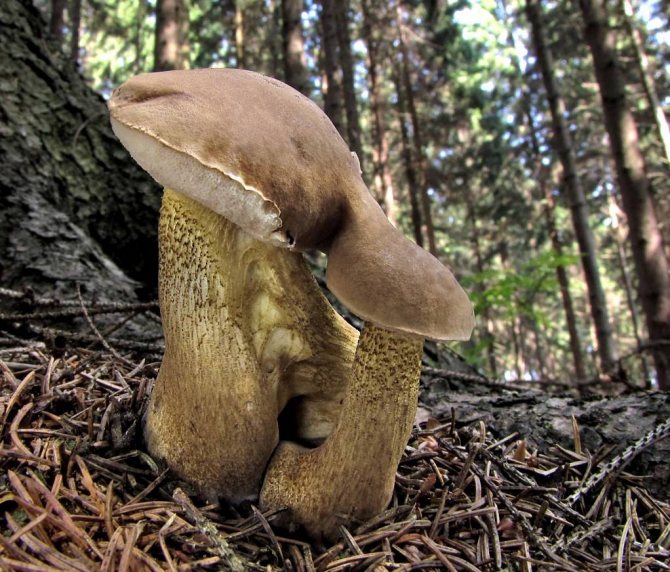

Signs of intoxication
People who confuse false and real mushrooms develop acute food poisoning, which can last up to 2-3 days:
- bad state of health;
- headaches;
- vomiting and nausea;
- diarrhea;
- limb cramps.
Poisonous entoloma (rose leaf), its differences from other mushrooms
But most of all, the poison of mushrooms affects the nervous system. The result is a hallucinogenic effect. therefore other symptoms may appear:
- severe depression;
- visions and hallucinations;
- sudden mood swings;
- memory loss.
Therefore, going on a quiet hunt, you need to be very careful when collecting forest delicacies. And if you still had to eat false white, then the first signs of poisoning (nausea, vomiting, stomach pain) will appear in half an hour. In this case, you need to call a doctor to help rid the body of toxins.
Pink-purple
The shape and diameter of the cap are exactly the same as that of the previous representative of the Borovik genus. When wet, the cap becomes a little slimy and acquires tubercles. This mushroom has an irregular color that ranges from light gray to olive gray. Has areas with purplish red and brown tint. When pressed against the mushroom, dark blue spots are formed. Sometimes the pink-purple aches can be damaged by insects. The damaged areas have a yellowish or olive-lemon tint.
The characteristics of the tubular layer and pores are the same as in the beautiful pain, however, the pores are brighter in color (pink-orange or light red). The length of the leg of this bolt reaches 15-17 cm, and its diameter is 7 cm. The color of the leg is lemon yellow with a slight pinkish-purple tint. At the end, it has a light burgundy mesh, when pressed, it takes on a blue tint.
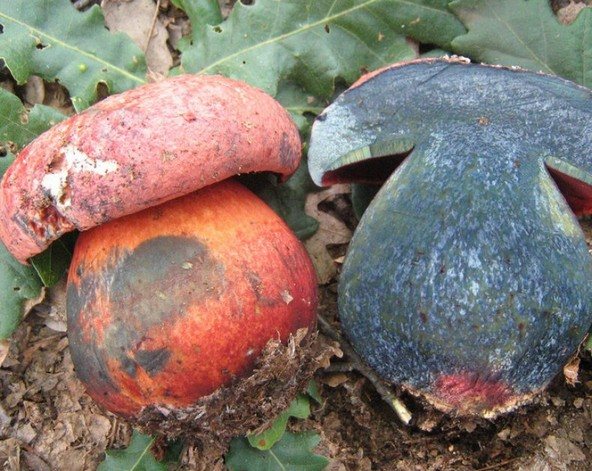

The pulp of this representative is dense, has a pleasant fruity smell, olive yellow color. At the cut site, it becomes dark blue, after a while the color becomes a contrasting wine shade. Pink-purple boletus has sweet flesh and pleasant taste characteristics, but it is not recommended to use it raw or boiled, as it is a poisonous representative of pain.
There is a pink-purple mushroom on calcareous soils, in deciduous forests, more often in mountainous regions. It prefers to grow among beeches and oaks. This pain has been little studied by mycologists, so it is not recommended to collect it. In addition, mushroom pickers rarely meet him. Most widespread in Western Ukraine, Russia, and some European countries.
Is the mushroom poisonous


Mushrooms can cause severe poisoning
Foreign and domestic scientists have a diametrically opposite opinion on this topic.
Russian biologists believe that it poses no danger to humans, is not toxic and cannot be eaten only because of its unacceptable taste.
In Europe, it is believed that bitterness contains dangerous substances that can impair liver function, and in some cases cause cirrhosis.
First aid
The toxins of various poisonous mushrooms in case of poisoning act on the body in different ways.
- Some interact with the lining of the stomach and intestines, causing nausea and vomiting.
- Others penetrate the liver, kidneys, heart and other vital organs, dizziness, inhibition of reaction and weakness appear.
If you have any symptoms, you need to hospitalize the victim as soon as possible.
Special substances contained in the product cause a significant release of bile, but this does not happen immediately, but after about a couple of weeks after eating the mushroom.
First of all, you need to call an ambulance. And before her arrival, you should:
- rinse the stomach with boiled water, you can use a very weak solution of potassium permanganate;
- drink a large dose of activated carbon;
- if diarrhea does not occur, try to artificially bring it closer with a laxative;
- the patient needs to press heat (heating pad) to the stomach and legs - this will reduce the risk of circulatory disorders;
- drink sweet tea or drinking water (not carbonated!) in large quantities.
Edibility and nutritional quality
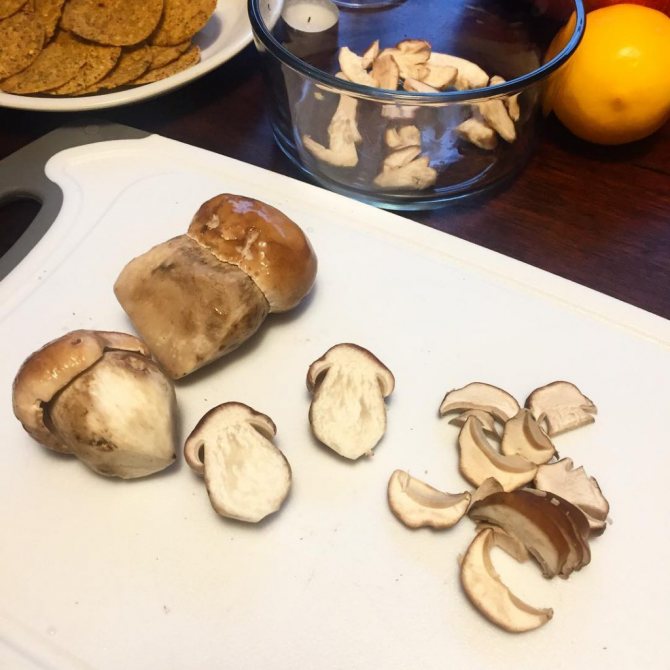

White mushroom - a real find for a culinary specialist and a real decoration of any table. It has practically no restrictions in the sphere of use: boletus mushrooms are dried, salted, pickled, fried. Mushroom soup is a true delicacy with a delicate aroma and rich taste. Dried mushroom powder is used as a savory seasoning for sauces.
Porcini mushrooms are an excellent source of easily digestible protein, which is very valuable when giving up meat.
The composition contains many useful substances and trace elements:
- B vitamins;
- potassium;
- iron;
- riboflavin;
- phosphorus;
- calcium.
Like any product, boletus can in rare cases cause individual intolerance. It should be eaten with caution by pregnant women, young children, people with diseases of the digestive system and prone to allergic reactions.
Beautiful
This type of pain can cause food poisoning, so it is classified as an inedible poisonous mushroom. The first symptoms of poisoning are considered: abdominal pain, nausea, diarrhea, vomiting, chills. Symptoms usually resolve without medical attendant intervention in 24 to 36 hours. There have been no fatal cases of poisoning from pain with fine pain.
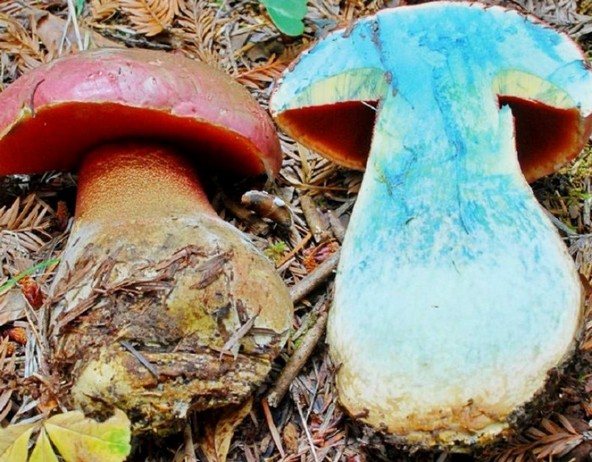

This type of boletus has a rather large diameter of the cap (there are specimens with a cap diameter of up to 30 cm). It is painted dark red, less often brown. Unlike all the types of pains described above, this mushroom has a rough surface of the cap. The characteristics of the pulp of this boletus completely coincide with those described above.
The leg length is standard, but its diameter has a fairly solid indicator (up to 12 cm). The structure of the stem resembles a convex cylinder, which tapers at the base, colored bright brown. The length of the tubes reaches 1.7 cm, the color resembles a mixture of lemon and lime. When pressed, the pores acquire a blue tint, in their natural form they have a bright brown color. Spore characteristics are no different from other representatives of this genus.


Most often, the beautiful boletus forms mycorrhiza with fir or stone fruit. Most common in the northwestern United States. Also found in New Mexico. You can find this pain in mixed forests in late summer - early autumn.
Similar species
Like most edible mushrooms, the white has several very dangerous "congeners" that can mislead an inexperienced mushroom picker.
Gall mushroom (bitter)
The insidious "impostor" is outwardly similar not only to the boletus, but also to the boletus.
To distinguish it, you need to pay attention to the following features:
- when cut, the pulp turns red or turns brown;
- pinkish tubular layer;
- pronounced bitter taste, which intensifies during cooking;
- the bitter is not damaged by worms.
Satanic mushroom
This malicious twin is more dangerous.
Fortunately, it is easier to identify it:
- the leg is bright red, which turns blue very quickly when cut;
- old mushrooms have a characteristic onion smell.
Satanic mushroom is very poisonous! Even a small piece can cause severe poisoning.If this happens, urgent hospitalization is required.
Growing
Many valuable mushrooms are grown in artificially created conditions, such as boletus, boletus and aspen mushrooms. Non-edible, can also be planted in garden beds and subsequently used for pharmaceutical purposes. But this does not apply to bitter taste. It makes no sense to purposefully grow a mushroom, and only gourmets or inexperienced mushroom pickers are capable of collecting this specimen in the forest for serving. Even in the absence of a decent harvest, you should not pay attention to the gall fungus.
Novice mushroom hunters are advised to bypass the false porcini mushroom. It is not easy to cook, there is a risk of departure, and its bright unpleasant taste will discourage the desire to eat bitter gourd. These representatives of mushroom crops are easy to confuse with white because of the shape of the cap and boletus because of its color. They are found in the same places. But some striking differences will help you figure out the inedible false white and not bring this dubious trophy out of the forest.
How to distinguish
Anyone who is still poorly versed and still cannot distinguish a good sample from a bad one should go to the forest with an experienced friend. Recognizing mushrooms is a science and mistakes can be costly!
Many rely on the "right" signs to easily and easily identify bad specimens. The poison is said to curdle milk and cause the silver to darken. There are many popular methods for checking mushrooms for toxicity during cooking, for example: changing the color of the heads of onions and garlic. These are all myths, and there are practically no universal ways to check! There is one truly reliable way to check mushrooms for toxicity or edibility: you need to know them!


